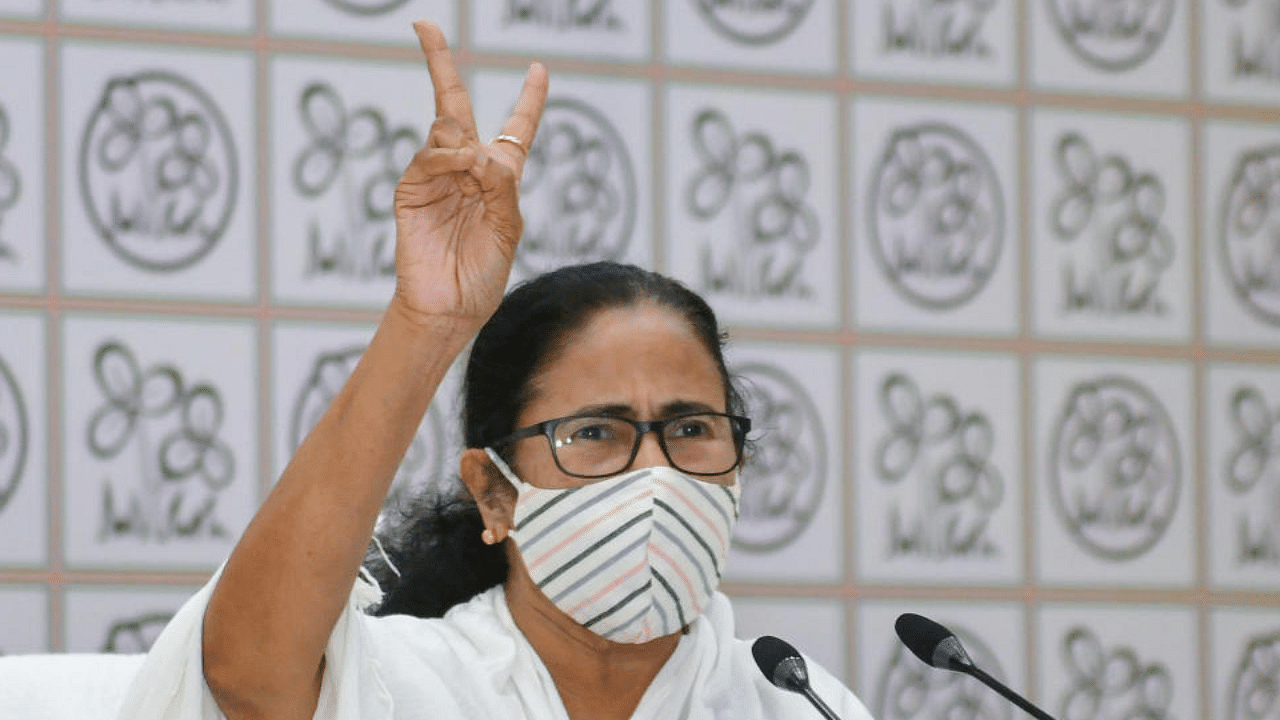
In a stunning result that could set the ball rolling for Opposition consolidation in the months ahead, Mamata Banerjee swept aside a high-octane challenge by the BJP to line her party up for a third term in power in Bengal. The BJP's perennial quest for national dominance encountered another immovable force, in Tamil Nadu, in the shape of the DMK's MK Stalin, and Kerala's Pinarayi Vijayan bucked a 40-year-trend of Left governments alternating with Congress to return to power, the BJP not even a speck on the horizon.
The celebratory mood in Mamata's TMC was deflated somewhat by the CM losing her own seat by a narrow margin to her one-time protege Suvendu Adhikari, a result she said would contest in court. She was projected as a winner before in a last-minute twist, her rival was declared elected.
But by leading her party inspirationally, there's no denying that Mamata has shown the the BJP juggernaut is eminently beatable, and so has emerged as the most powerful regional satrap in the Opposition galaxy, a potential nucleus for a federal front, with the Congress sinking further. Such thoughts are clearly not far away from her mind: "Bengal has saved India today," she said after the victory.
Bengal, with 42 Lok Sabha seats, is the third-most important state electorally behind BJP-ruled Uttar Pradesh (80 seats) and Maharashtra (48), ruled by the Shiv Sena headed Opposition alliance. The 66-year-old Mamata has the age and experience in governance, plus a good personal equation with Sonia Gandhi, that could play in her favour when it comes to finding an acceptable option to take on Modi in the 2024 national polls.
The Bengal defeat is especially galling for the BJP because Prime Minister Narendra Modi, Home Minister Amit Shah and party chief JP Nadda made it a point to criss-cross the state in their campaign, held as Covid-19 was raging through India. Tall claims of winning more than 200 seats backfired badly, and though its final tally is a big increase from next to nothing in 2016, it is a massive disappointment after a good showing in the Lok Sabha polls in the state.
The other national party, the Congress, sank further, and its spokespersons shunned panel discussions on media platforms. This slide is bound to raise more demands for self-analysis and reflection, an exercise which has in the past yielded precious little in the Gandhi-family dominated outfit.
Stalin's win in Tamil Nadu in the face of a surprisingly robust showing by the incumbent AIADMK gives him a chance to be his own man after a lifetime spent in the shadow of his father, the late former chief minister M Karunanidhi. Like Mamata, he received congratulations from other potential members of a federal front.
With a rare repeat victory in Kerala, the Left was able to retain its only bastion. The BJP, despite a characteristically polarising campaign and projecting Metro Man E Sreedharan, failed to make a worthwhile impact.
A repeat victory in Assam was, however, good solace for the saffron party as the Congress despite heading a seven-party 'Mahajoth" and a massive campaign to capitalise on anti-CAA sentiments, could not unseat the BJP from the gateway to North East. Both Priyanka Gandhi and Rahul Gandhi had extensively campaigned in Assam.
The combination of Sarwananda Sonowal and Himanta Biswa Sarma, once again delivered, proving that the 2016 victory in Assam was not a flash in the pan.
The victory for BJP-NRC combine in Puducherry (8 of 12 seats) is pregnant with the possibility of providing a gateway to the BJP to Tamil Nadu in future., though the sombre reality is that the saffron party could not make much headway in other South Indian states despite its strong presence in Karnataka for nearly two decades. The BJP, with hardly any footprint in the Union Territory, backed heavily on Congress deserters, a strategy which paid off well.
For the BJP, ruling the Centre with back-to-back massive mandates in the Lok Sabha polls, the writing is on the wall: A vote for Modi at the Centre is not a vote for the BJP in the states and they need a new narrative, especially after the Covid disaster.
The Modi factor, which had worked for BJP in states like Maharashtra, Haryana, Jharkhand and Uttar Pradesh after the the 2014 Lok Sabha landslide, has proved ineffective in Assembly polls since 2018. Signs of it were first seen in 2017, when the BJP barely managed to win the Modi-Shah stronghold of Gujarat.
